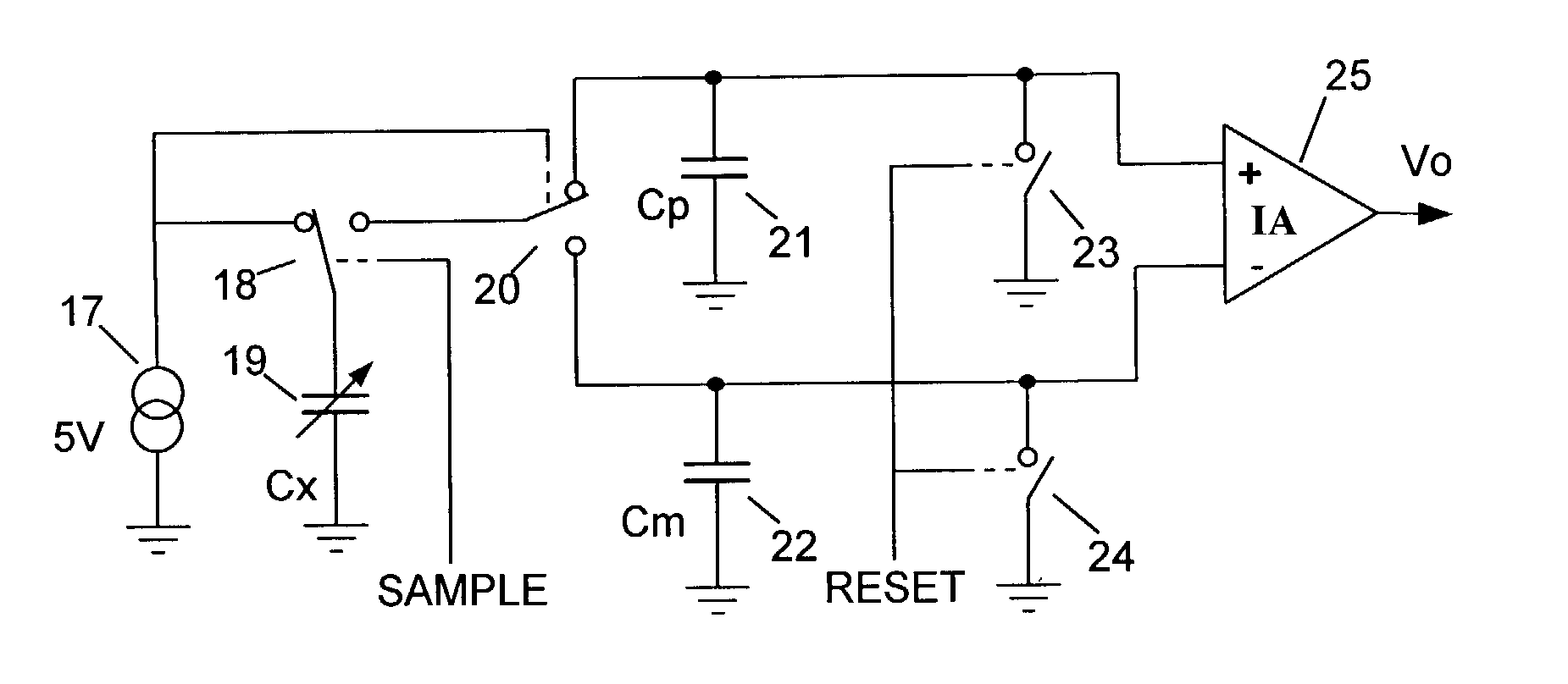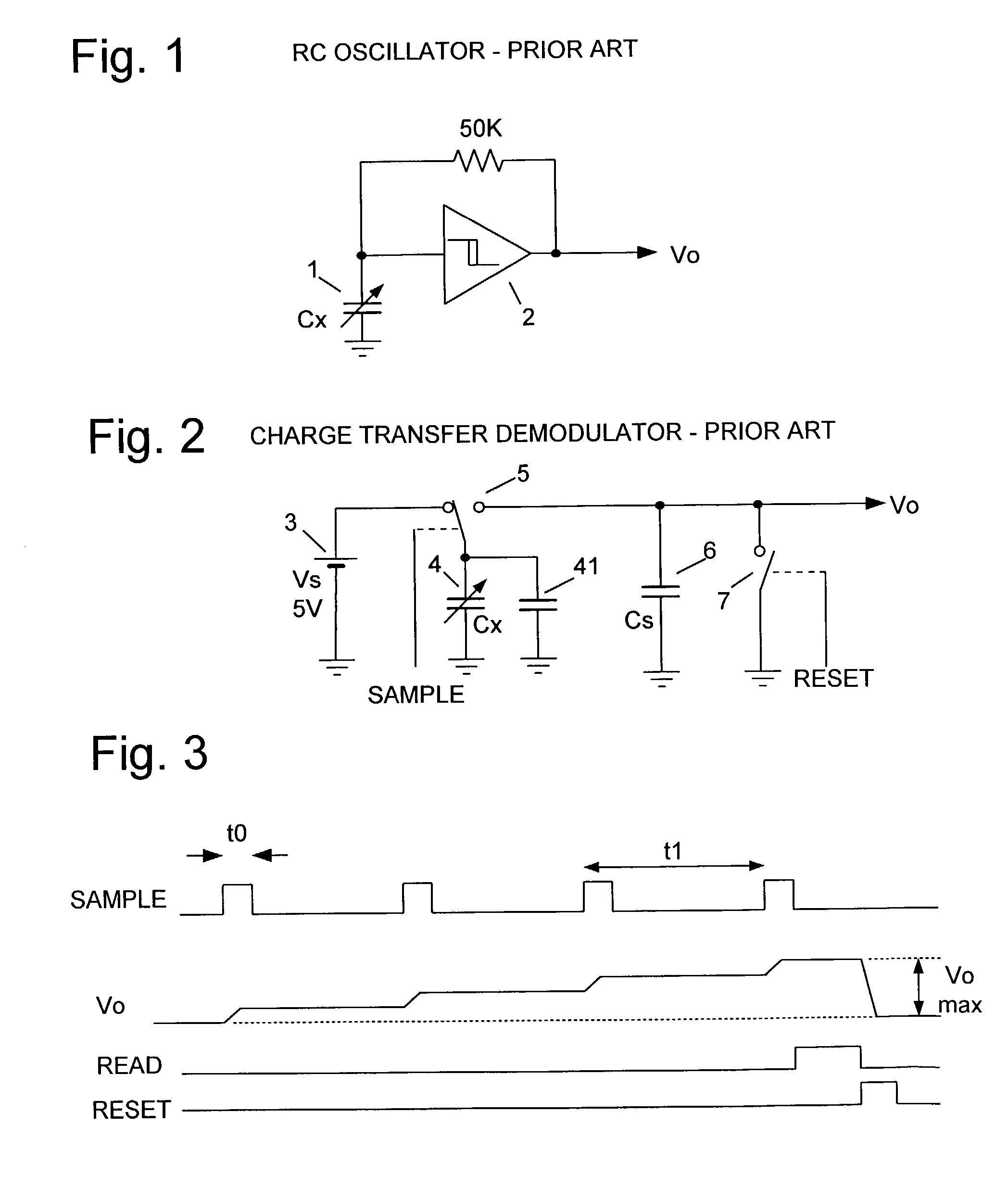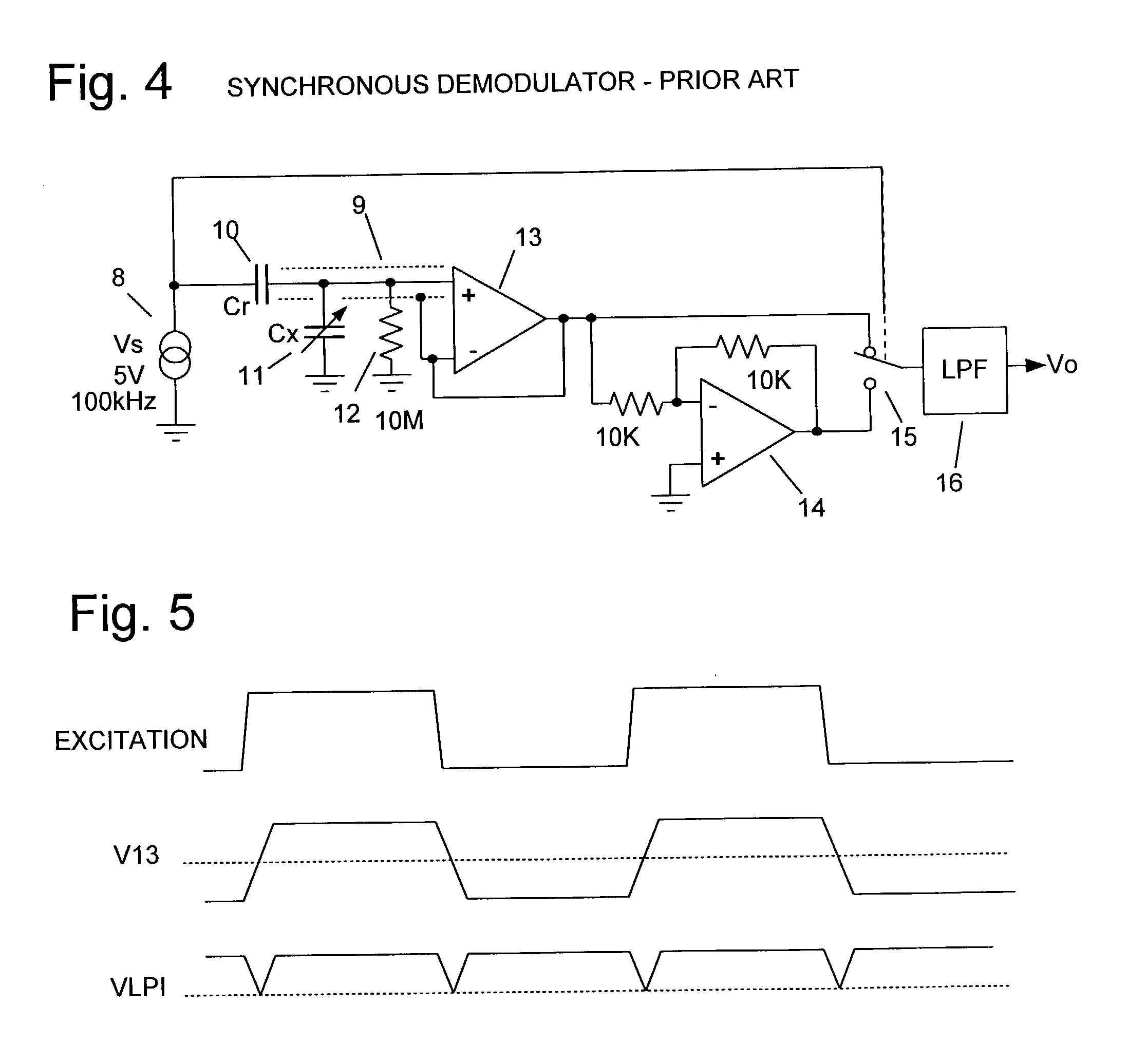Capacitive sensor circuit with good noise rejection
a sensor circuit and capacitor technology, applied in the field of capacitor sensors, can solve the problems of rc oscillator noise resistance, noise resistance, and noise at power frequencies and harmonics of most industrial sites, and achieve the effect of improving the noise rejection of prior art circuits
- Summary
- Abstract
- Description
- Claims
- Application Information
AI Technical Summary
Benefits of technology
Problems solved by technology
Method used
Image
Examples
Embodiment Construction
[0117] FIG. 8 is preferred for low-noise applications with a measured capacitor having one terminal grounded. If good linearity is needed, feedback to the excitation voltage as taught in FIG. 14 is added. If guarding of stray capacitance to ground is needed, the guard circuit of FIG. 14 is added.
[0118] FIG. 10 is used for a measured capacitor has both terminals available, and its linearity can optionally be improved with the feedback to the excitation voltage as taught in FIG. 12.
[0119] FIG. 13 is preferred for a measured capacitor with both terminals available, with an output that is linear with capacitance or linear with the reciprocal of capacitance.
[0120] Conclusion and Scope
[0121] Several important advances for capacitive sensing circuits can be seen in this invention. The characteristics of synchronous demodulators and charge transfer circuits have been advantageously combined in a way to greatly increase the noise resistance, and added circuits show how to improve linearity a...
PUM
 Login to View More
Login to View More Abstract
Description
Claims
Application Information
 Login to View More
Login to View More - R&D
- Intellectual Property
- Life Sciences
- Materials
- Tech Scout
- Unparalleled Data Quality
- Higher Quality Content
- 60% Fewer Hallucinations
Browse by: Latest US Patents, China's latest patents, Technical Efficacy Thesaurus, Application Domain, Technology Topic, Popular Technical Reports.
© 2025 PatSnap. All rights reserved.Legal|Privacy policy|Modern Slavery Act Transparency Statement|Sitemap|About US| Contact US: help@patsnap.com



